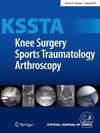Reduced retear rates yet similar clinical outcomes following arthroscopic partial repair of large and massive irreparable rotator cuff tears with biceps augmentation compared to repairs without biceps augmentation: A systematic review and meta-analysis
Abstract
Purpose
To compare the clinical outcomes between arthroscopic partial rotator cuff repair with biceps augmentation (BA) and partial repair (PR) without BA.
Methods
This systematic review included studies comparing outcomes of arthroscopic repair for large to massive irreparable rotator cuff tears with and without the BA. The focus was on postoperative clinical results and retear rates. Mean differences were used to express continuous outcomes, while odds ratios (ORs) were employed for dichotomous outcomes.
Results
Ten studies (733 shoulders, all level 3 evidence) were included. The BA group showed a significant reduction in retear rates (OR = 0.40, 95% confidence interval [CI]: 0.20–0.77, P = 0.007) and comparable postoperative outcomes across various measures: American Shoulder and Elbow Surgeons (ASES) score, visual analogue scale for pain, University of California-Los Angeles shoulder score, active forward flexion motion and active external rotation at the arm-at-side position compared to the PR group. Subgroup analysis of two BA techniques—rerouting and supplementation following supraglenoid tenotomy—showed no significant differences in ASES score for either technique versus PR. However, rerouting significantly lowered retear rates (OR = 0.21, 95% CI: 0.12–0.36, p < 0.001), while supplementation showed similar retear rates to PR (OR = 0.87, 95% CI: 0.37–2.02, n.s.).
Conclusion
Arthroscopic partial rotator cuff repair with BA for large to massive irreparable rotator cuff tears is a reliable technique, resulting in improved postoperative outcomes. BA using supplementation following supraglenoid tenotomy showed similar clinical outcomes and range of motion but with lower retear rates compared to the PR group.
Level of Evidence
Level III.

 求助内容:
求助内容: 应助结果提醒方式:
应助结果提醒方式:


